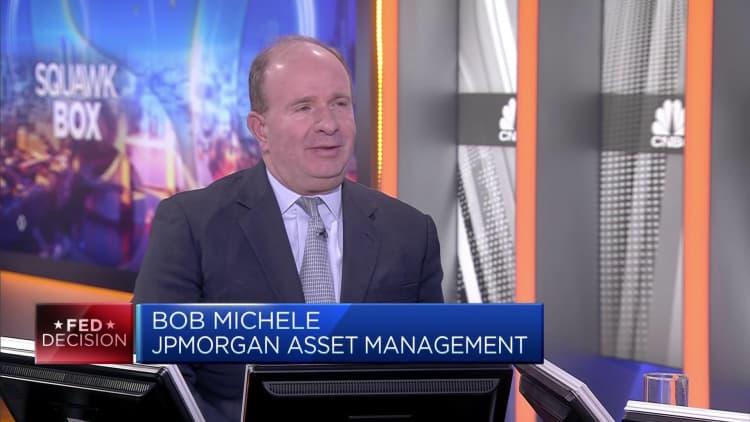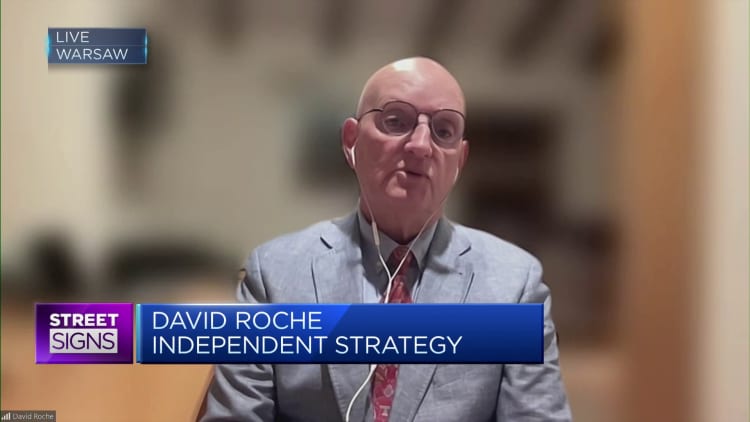An undated editorial photograph combining images of Japanese yen bank notes with stock market indicators.
Thank you for reading this post, don't forget to subscribe!Javier Ghersi | Moment | Getty Images
Japan’s central bank maintained its ultra-loose policy and left rates unchanged on Friday, mindful of the “extremely high uncertainties” on the growth outlook domestically and globally.
In a policy statement after its September meeting, the Bank of Japan said it would maintain short-term interest rates at -0.1%, and cap the 10-year Japanese government bond yield around zero, as widely expected. The Japanese central bank is scheduled to hold a press conference later Friday, where Governor Kazuo Ueda could offer more forward guidance.
“With extremely high uncertainties surrounding economies and financial markets at home and abroad, the Bank will patiently continue with monetary easing, while nimbly responding to developments in economic activity and prices as well as financial conditions,” the Bank of Japan said in its policy statement Friday.
The Japanese central bank’s ultra-loose monetary position though, marks Japan as an outlier among major central banks, which have raised interest rates in the last two years to control spiraling inflation.
Partly as a result of this policy divergence between the BOJ and the rest of the world, the Japanese yen slipped about 0.4% to about 148.16 against the dollar after Friday’s decision, while 10-year Japanese government bond yields were largely unchanged. The yen has now weakened more than 11% against the greenback this year to date.
The BOJ’s policy decision Friday came at the end of a week that was dotted with a flurry of other central bank policy decisions, including the U.S. Federal Reserve’s pledge to hold high rates for longer and the Bank of England ending a run of 14 straight interest rate hikes.
At its previous policy meeting in July, the BOJ loosened its yield curve control to allow longer term rates to move more in tandem with rising inflation in Ueda’s first policy change since assuming office in April.
The yield curve control is a policy tool where the central bank targets an interest rate, and then buys and sells bonds as necessary to achieve that target.

The move to broaden the permissible range for 10-year JGB yields of around plus and minus 0.5 percentage points from its 0% target to 1% was seen as the start of a gradual departure from the yield curve control policy enacted by Ueda’s predecessor.
Many economists brought forward their forecasts for a quicker exit from the BOJ’s ultra-loose monetary policy to sometime in the first half of 2024 after Ueda told Yomiuri Shimbun in an interview published Sept. 9 that the BOJ could have sufficient data by the end of this year to determine when it could end negative rates.
Sustainable inflation
Despite core inflation exceeding the Bank of Japan’s stated 2% target for 17 consecutive months, BOJ officials have been cautious about exiting its radical stimulus, which was put in place to combat decades of deflation in the world’s third-largest economy.
This is due to what the BOJ sees as a lack of sustainable inflation, deriving from meaningful wage growth that it believes would lead to a positive chain effect supporting household consumption and economic growth.
Core inflation — which includes oil products but excludes volatile fresh food prices — came in at 3.1% year-on-year in August, ahead of the BOJ’s policy outcome on Friday. Consumer prices excluding energy and fresh food increased 4.3% from the previous year.
Wage growth, output gap — which measures the difference between an economy’s actual and potential output — and price expectations are among factors the Bank of Japan has prioritized as meaningful inflation drivers.
“Japan has the best chance in a generation to move from a deflationary environment to one that is a bit more inflationary and one which has a degree of permanence,” said Oliver Lee, client portfolio manager at Eastspring Investments.
“The key thing is wages. Japan needs to see meaningful and sustained wage inflation, which can have a psychological impact on consumption,” he said. “Hopefully this could be the start of a virtuous cycle for economic growth, but it’s still too early to say whether that will pan out. We probably need another six to 12 months to see where we are on that front.”

Raising interest rates prematurely may derail growth, while an excessive delay in tightening policy would weigh further on the Japanese yen and raise the risks of financial fragility.
Any delay would also also put more pressure on Japanese Prime Minister Fumio Kishida, who pledged to help consumers cope with rising living costs at a cabinet reshuffle last week. He also vowed to ensure the world’s third-largest economy will emerge meaningfully out of deflation with wage growth that consistently exceeds the rate of inflation.
Japan’s gross domestic product growth for the April-June quarter was revised down to an annualized 4.8% from the preliminary 6% print due to weak capital spending.
While output gap grew 0.4% in the second quarter to mark the first increase in 15 quarters, uneven domestic economic data and an uncertain global economic outlook have made it more complex for policymakers.


